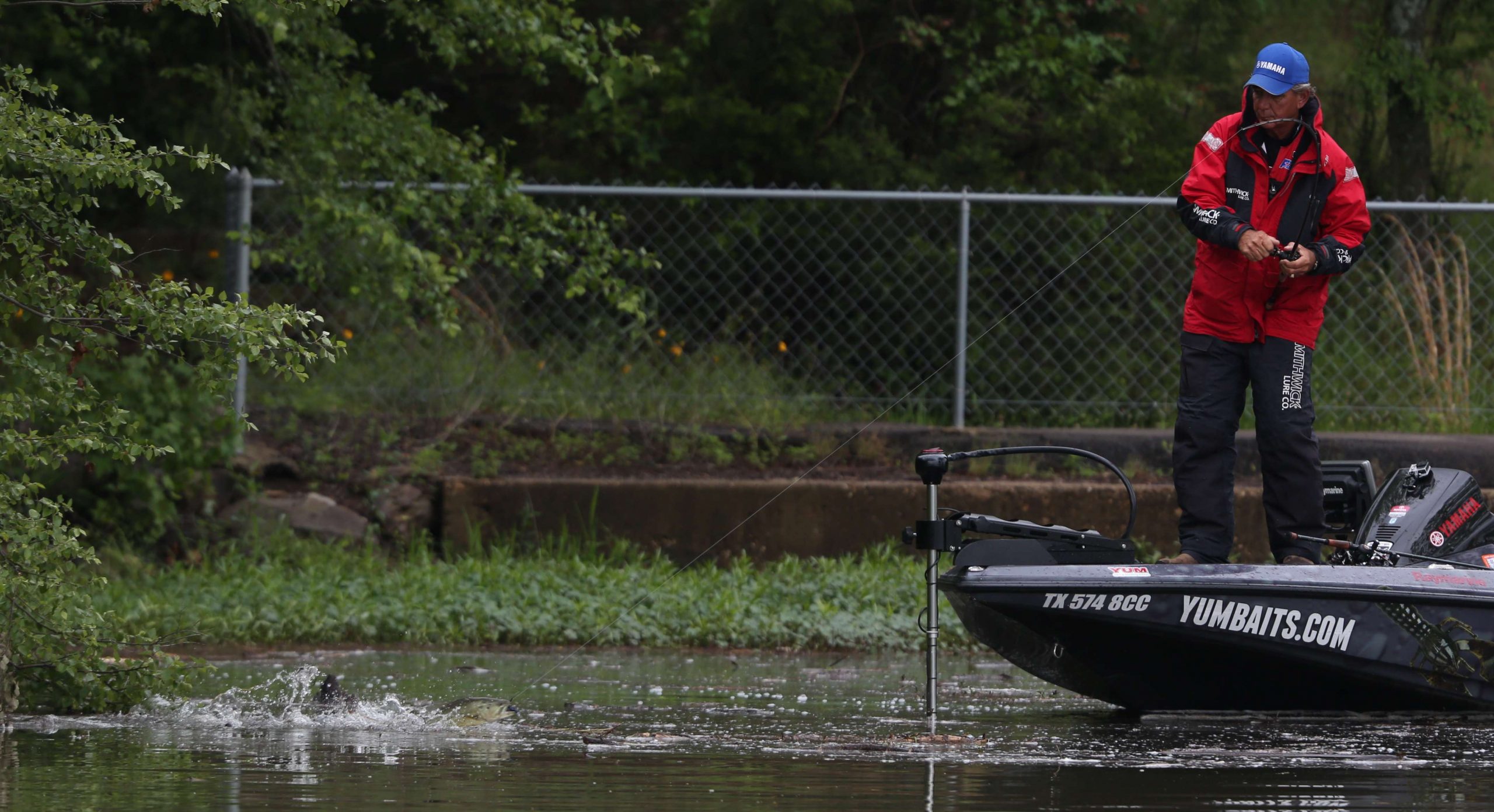
Part 1: Topwater Timing and Gear
In 2005 B.A.S.S. conducted the Greatest Angler Debate and crowned Rick Clunn the best of all-time. Roland Martin, Bill Dance, Denny Brauer and Kevin VanDam rounded out the top five. Shortly after that, Bassmaster Magazine polled those top five and asked which anglers were the greatest at particular methods ¾ deep cranking, flipping and pitching, spinnerbaiting and the like.
The five didn’t agree on much. In fact, they were unanimous only when it came to one technique. They all selected Zell Rowland as the best topwater angler of all-time.
“I’ve always loved topwater fishing,” says Rowland. “There’s no more enjoyable way of catching bass than getting them to strike a surface bait.”
When to go up top
“Bass will feed on top a lot more often than most anglers think,” Rowland says. “I’ve caught them on top when the water temperature was in the low 40s all the way up into the 90s. I don’t expect great topwater fishing unless the water temperature is at least 57 or 58 degrees.”
On the other end of the spectrum, he believes it can’t get too hot for good topwater fishing as long as fish can be found shallow. Surface temps in the 90s have yielded plenty of topwater bites for Rowland over the years.
“Generally, the colder the water, the more you need to use floating baits that can be worked slowly,” he says. “As the water temperature rises, working baits faster and using topwater lures that sink when you’re not cranking them — like buzzbaits — works better. Clear water is often better than dirty water, and that’s especially true if the water is cold. Wind and wave action will impact topwater fishing, but mostly it affects your retrieve rather than whether or not you can catch bass on top.”
The right tackle
The right line, rod and reel for surface fishing will not only make the experience easier and more fun, but it will be more productive, too. Of the three basic line types for bass fishing, one sinks (fluorocarbon) and another is highly visible (braid). That leaves monofilament as Zell Rowland’s line of choice for almost all floating topwater baits. Notice that “floating” does not equal “topwater.” There are plenty of “topwater” baits out there that don’t float — most notably buzzbaits. For those, he opts for braid or even fluorocarbon depending on cover and water conditions.
“I use a simple rule of thumb for my monofilament selection,” Rowland says. “If I want a lot of action out of my bait, I use light line ¾ as light as 10-pound-test. And if I want less action, I use heavy line — up to about 20-pound. I probably do most of my topwater fishing with 14-pound-test Silver Thread Excalibur Copolymer.”
If you think Rowland uses lighter line in clear water and heavier line when the water’s dingy, you’re half right.
“I use heavy line in both dirty water and very clear water,” he says. “The bass can’t see it so well when the water’s dingy, and when the water’s clear I usually fish my topwaters fast so the fish don’t get a good look at the lure or the line.”
And for buzzbaits and topwaters like hollow-bodied frogs and rats?
“I usually fish braid with those,” he says. “The line doesn’t even touch the water with buzzbaits, and when you’re frog fishing the cover is usually so heavy the bass don’t see the line anyway. I usually go with 50- or 65-pound-test braid. The only time to use mono with a frog or rat is if you’re fishing around cover like boat docks in clear water.”
Floating topwater baits like poppers, walkers and prop baits can be effective at a variety of retrieve speeds. To handle them all -but especially to handle the faster retrieves- requires a fast reel. Rowland likes the Lew’s Tournament Lite Speed Spool casting reel with a 7.1:1 gear ratio.
“It allows me to keep up with the bait even on a fast retrieve,” he says. “You develop a cadence with your rod, reel and lure. A high-speed reel keeps it comfortable.” The fast retrieve also makes lures like buzzbaits easy to keep on top, though a slow retrieve may be necessary to draw strikes.
For decades, topwater zealots have been hoarding the old All Star Zell Rowland signature series topwater rods from the 1980s … long out of production. It was the last rod over which Rowland had design freedom. But he has good news.
“I’m working with Impulse Fishing Rods to create a new line of bass rods, and the first one out the door is the Zell Rowland Topwater Rod – a 6-foot, 8-inch model with a fairly light tip and a blank with a parabolic bend. There’s nothing on the market like it, and I’m designing it to be the perfect tool for most topwater fishing.”
The light tip comes in handy when loading the rod to cast and when setting the hook.
“Most modern graphite rods are too stiff,” Rowland says. “When you see a topwater strike, your instinct is to set the hook before you feel the fish. A softer tip allows the bass to take the bait a little deeper before you can pull it away. The parabolic bend of my new rod is just right to set the trebles properly and fight the fish. From cast to catch, it’s built for topwater fishing. It’s the rod I use for every topwater lure that has treble hooks.”
For hollow-bodied frogs, Rowland uses a 7-foot, medium-heavy Impulse Fishing casting rod that also has a parabolic action. It’s better suited for driving a single hook (or the double hook of most frogs and rats) through the tough mouth of a bass.
In Part 2, Rowland covers topwater bait types.





